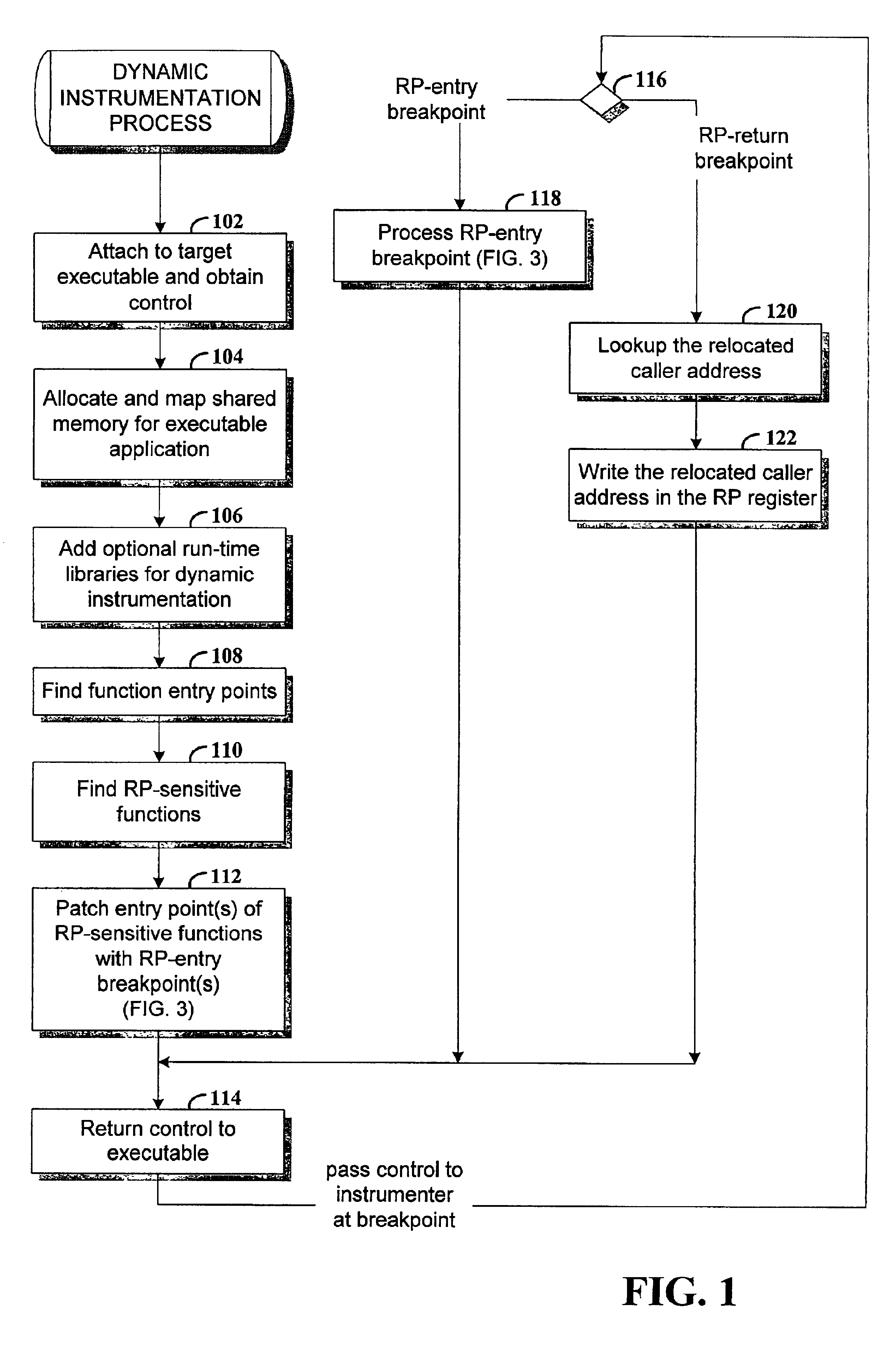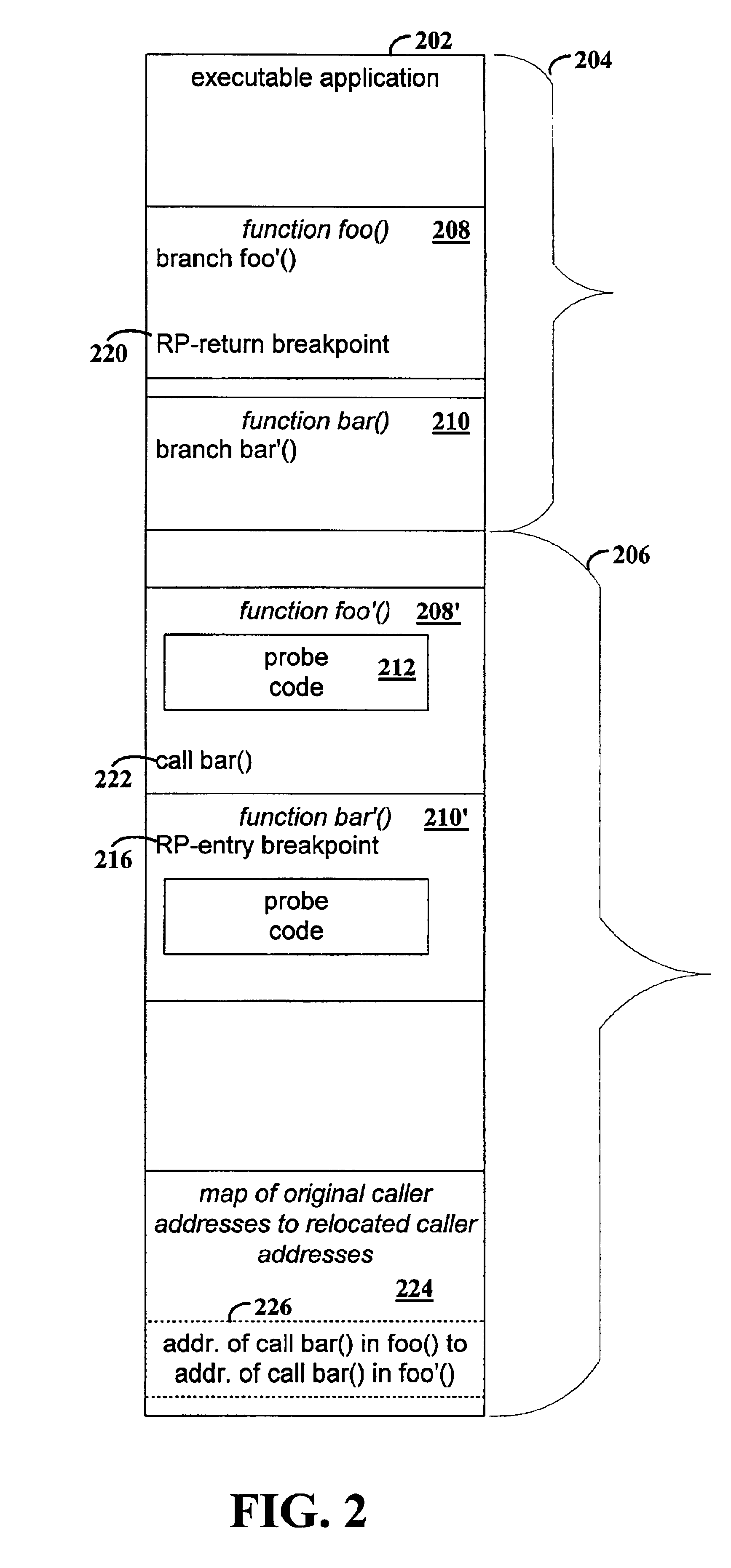Handling calls from relocated instrumented functions to functions that expect a return pointer value in an original address space
a technology of instrumentation and function, applied in the direction of instruments, error detection/correction, computing, etc., can solve the problem that the process of setting up a program for instrumentation can be time-consuming
- Summary
- Abstract
- Description
- Claims
- Application Information
AI Technical Summary
Benefits of technology
Problems solved by technology
Method used
Image
Examples
Embodiment Construction
[0016]FIG. 1 is a flowchart of a process for dynamic instrumentation of executable program code in accordance with one embodiment of the invention. The process generally entails generating instrumented versions of RP-sensitive functions that are called during execution of the executable application.
[0017]At step 102, an instrumentation process attaches to a target executable application and obtains control. Those skilled in the art will appreciate that this step can in one embodiment be accomplished using known techniques. At step 104, the process allocates and maps shared memory for use by the instrumentation process and the executable application. In one embodiment, the process for allocating an mapping shared memory is implemented consistent with the teachings of the patent application entitled, “DYNAMIC INSTRUMENTATION OF AN EXECUTABLE PROGRAM”, by Hundt et al., filed on Apr. 11, 2001, and having patent / application Ser. No. 09 / 833,248, the contents of which are incorporated here...
PUM
 Login to View More
Login to View More Abstract
Description
Claims
Application Information
 Login to View More
Login to View More - R&D
- Intellectual Property
- Life Sciences
- Materials
- Tech Scout
- Unparalleled Data Quality
- Higher Quality Content
- 60% Fewer Hallucinations
Browse by: Latest US Patents, China's latest patents, Technical Efficacy Thesaurus, Application Domain, Technology Topic, Popular Technical Reports.
© 2025 PatSnap. All rights reserved.Legal|Privacy policy|Modern Slavery Act Transparency Statement|Sitemap|About US| Contact US: help@patsnap.com



